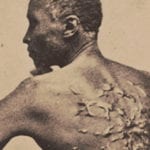 Weird Stuff
Weird Stuff  Weird Stuff
Weird Stuff  Our World
Our World 10 Ways Your Christmas Tree Is More Lit Than You Think
 Movies and TV
Movies and TV The 10 Coolest Stars to Set Sail on The Love Boat
 History
History 10 Things You Didn’t Know About the American National Anthem
 Technology
Technology Top 10 Everyday Tech Buzzwords That Hide a Darker Past
 Humans
Humans 10 Everyday Human Behaviors That Are Actually Survival Instincts
 Animals
Animals 10 Animals That Humiliated and Harmed Historical Leaders
 History
History 10 Most Influential Protests in Modern History
 Creepy
Creepy 10 More Representations of Death from Myth, Legend, and Folktale
 Technology
Technology 10 Scientific Breakthroughs of 2025 That’ll Change Everything
 Weird Stuff
Weird Stuff Ten Bizarre Facts About The Doge Meme
 Our World
Our World 10 Ways Your Christmas Tree Is More Lit Than You Think
 Movies and TV
Movies and TV The 10 Coolest Stars to Set Sail on The Love Boat
Who's Behind Listverse?

Jamie Frater
Head Editor
Jamie founded Listverse due to an insatiable desire to share fascinating, obscure, and bizarre facts. He has been a guest speaker on numerous national radio and television stations and is a five time published author.
More About Us History
History 10 Things You Didn’t Know About the American National Anthem
 Technology
Technology Top 10 Everyday Tech Buzzwords That Hide a Darker Past
 Humans
Humans 10 Everyday Human Behaviors That Are Actually Survival Instincts
 Animals
Animals 10 Animals That Humiliated and Harmed Historical Leaders
 History
History 10 Most Influential Protests in Modern History
 Creepy
Creepy 10 More Representations of Death from Myth, Legend, and Folktale
 Technology
Technology 10 Scientific Breakthroughs of 2025 That’ll Change Everything
10 People Who Were Framed For Horrible Crimes
Movies and TV shows often use frame-ups as a plot device, but how often do they happen in real life? Luckily, not too often, because it’s not the most effective way to eliminate someone, but there have been many cases of people being framed for crimes they didn’t commit.
10Joseph Melendez
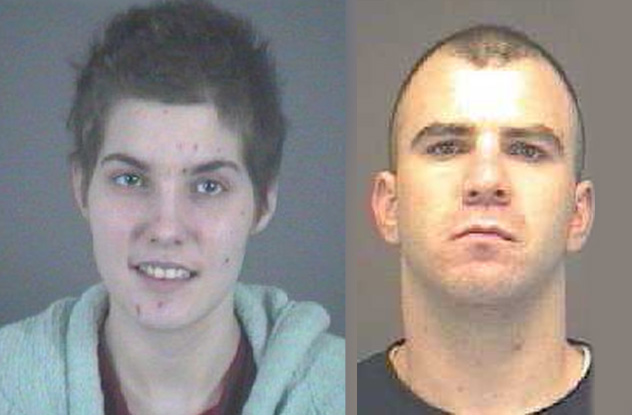
At 3:00 AM on September 24, 2010, police were called to a neighborhood in Cleveland, Ohio. The caller was Joseph Melendez, who said a man was chasing him. When the police arrived, 18-year-old Gabrielle Bracken claimed that Melendez had held a knife to her throat and tried to rape her. Her husband, 27, had saved her. Melendez was arrested and charged with abduction and attempted rape.
As the police took a closer look at the case, things just didn’t add up. Also, a witness came forward and called the whole thing a setup. Gabrielle Bracken’s husband, James Bracken, had thought that Gabrielle was having an affair with Melendez. When he arrived at the house that night, Gabrielle pointed to a large knife in the driveway and asked him to pick it up. Once inside, Gabrielle brought him upstairs, where James attacked him.
The plan was to severely beat, or even kill Melendez. The fingerprints on the knife would prove that James walked in on the rape and was defending his wife. Gabrielle went along with it to show that she had no feeling for Melendez.
James and Gabrielle were charged with fraud and received three years of probation. Melendez sued and won a settlement of $1.5 million.
9Mark Herman

On January 16, 1976, oil executive Richard Kreusler was sitting in his home in Palm Beach, Florida when the doorbell rang. Kreusler walked to the door, and two shotgun blasts blew through the front door. Another shot came through the side window. Kreusler was hit twice and died 13 days later in the hospital.
Mark Herman was arrested a short time after the murder for drugs and weapon charges. Herman, who was also a part-time karate teacher, couldn’t remember exactly where he’d been on the night of the murder but believed he’d been having dinner with friends. The friends backed up his story but weren’t great witnesses because they were cloudy on other details.
While he was in prison, four jailhouse witnesses came forward to say that Herman confessed to being the shooter in the Kreusler murder. There was even a two-page confession apparently written by Herman. In 1978, Herman was convicted based on the witnesses’ testimony; the confession wasn’t admissible, but information from it was used in the trial.
The apparent motive was that Herman wanted to kill Kreusler’s neighbor over a drug debt, but Herman was high and drunk and mixed up the houses. However, the neighbor passed a polygraph saying that he didn’t know Herman and wasn’t involved with drugs. The judge did not allow the neighbor to testify.
Herman pleaded his innocence while sitting in prison. Eight years later, his appeal was heard in court. Handwriting analysis showed that the confession wasn’t written by Herman. Then three of the four witnesses said on the news program 20/20 that they’d lied about Herman’s involvement. They had set him up to get their sentences shortened.
It wasn’t until 1992, 15 years after his conviction, that Herman was released from prison after winning an appeal. Kreusler’s murder remains unsolved, but there are theories that his murder may have stemmed from his role as a city councilman.
8Sultan Alam
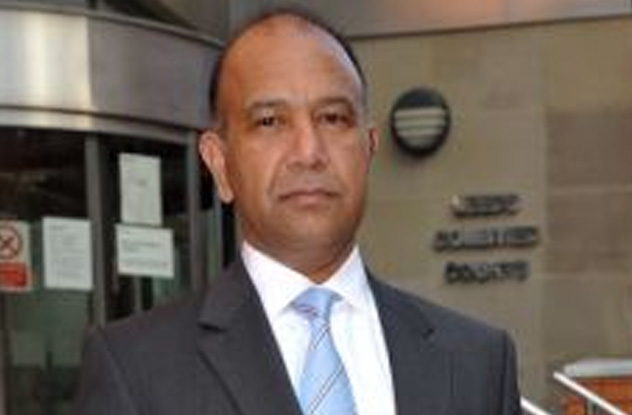
In 1996, police officer Sultan Alam of Cleveland, England was convicted of conspiracy to steal car parts. He spent 18 months in prison. When he got out, he wasn’t allowed back on the force, and his reputation was in shambles. His marriage fell apart a short time later. His life was in ruins over the conviction, but Alam was actually innocent.
In 1993, the man had sued the Cleveland department for racial discrimination. He wasn’t vindicated until 2007, when his conviction was overturned and he was allowed to return to the force. He retired in 2009 for health reasons.
In 2012, the Cleveland Police Department admitted to malicious prosecution and misfeasance in public office. Alam was awarded £838,363 ($1.3 million) in compensation.
None of the the four officers who framed Alam were ever charged. Three had left the force, but one remained as an active officer.
7Orlando Bowen
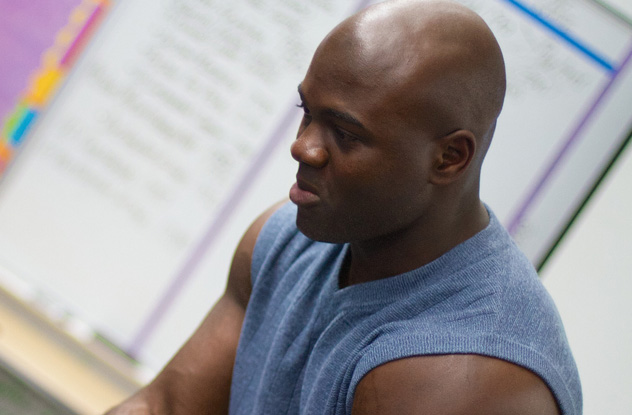
On March 26, 2004, Canadian Football League linebacker Orlando Bowen was out celebrating his new contract with the Toronto Argonauts. Two plainclothes officers approached him, and he apparently ran away from them. There was an altercation, and Bowen was arrested for drug possession and assaulting a police officer.
Bowen, who spoke to schoolchildren about staying away from drugs, claimed that the cops had planted the drugs on him. In his version of the story, he was talking on his cell phone outside a club in Mississauga when two men approached him looking for drugs. Bowen turned them down, the men got more aggressive, and one grabbed his arm. He broke free and ran. One of the men shouted, “Stop, or I’ll shoot.” He then realized they were police officers, so he stopped. He was beaten, getting a concussion and a busted lip, and that’s when they planted the cocaine on him.
He went to trial in 2005, and both officers, Sheldon Cook and Grant Gervais, testified in court that Bowen threw away the cocaine as he ran. However, Bowen was acquitted when one of the arresting officers, Sheldon Cook, was arrested for trafficking cocaine.
The damage had already been done. Bowen, who had been a pillar of the community, had his reputation trashed. He also had to retire from football early because of a concussion he’d received during the arrest.
Bowen sued the police department for $14 million and received an out-of-court settlement. He is now a motivational speaker and has even forgiven the two officers who arrested him. Cook was suspended without pay from the force and then was convicted and sentenced to five years in prison. He’s appealing the conviction.
6Matt Kostolnik

Shortly after moving into their new home in Minnesota, lawyer Matt Kostolnik appeared to be having problems at work and with the law. First off, there was a MySpace page under Kostolnik’s name that posted child pornography. Below the picture, an entry bragged that Kostolnik was so great a lawyer that he could get away with such lawbreaking. The pictures were then sent from an email account with Kostolnik’s name to his coworkers, along with a sexual message to a female coworker. Kostolnik swore he didn’t know what was going on.
In May 2009, things got worse when the Secret Service visited Kostolnik at his office. They were investigating emails from a Yahoo account in his name, which came from his IP address. They contained death threats against Joe Biden and other politicians. Again, Kostolnik denied that he was the one sending the emails.
His law firm used a forensic computer scientist, and he found evidence that his neighbor, 46-year-old Barry Ardolf, had been messing with the Kostolniks’ Internet connection. On the first day they moved into their new house, the Kostolniks’ son had wandered into Ardolf’s yard. He’d picked up the toddler, brought him back to his parents—and planted a kiss on the young boy’s lips. It creeped out the Kostolniks, so they called the police. Ardolf then bought some software and spent two weeks breaking into their WiFi, which is how he sent the emails.
Ardolf was offered a plea deal for two years in prison over the Biden emails. He turned it down and got an 18-year sentence. When he is released from prison, he will have to register as a sex offender.
5David Ranta
On February 8, 1990, a courier for Pan American Diamond Corporation left his apartment in the Williamsburg area of New York City to catch a flight to the Dominican Republic. He was carrying a 25-kilogram (50 lb) suitcase that contained diamonds and other precious stones. As he walked to his car, he noticed a man with blond hair following him. Once he was in his car, he saw the man pull out a gun. He reversed his car back into the would-be robber, throwing him into a pile of trash, and the courier escaped to the airport.
Desperate to get away, the would-be robber shot a nearby driver in the head, took his car, and drove off. The victim was 58-year-old rabbi and Holocaust survivor Chaskel Werzberger, who died four days later.
The murder of Werzberger was big news in New York City. Officials vowed swift justice and offered a $10,000 reward. Detective Louis Scarcella led a team of 40 investigators, and on August 13, 1990, they had their man.
They arrested drug addict and small-time thief David Ranta. Two inmates who were looking at long prison terms identified him as the gunman. After holding him for 26 hours, Scarcella had a confession, and a witness placed Ranta there as well. He was convicted and got 37.5 years in prison, despite his claims of innocence. The police had set him up, he said, but his pleas fell on deaf ears.
The presiding judge noticed a lot wrong with Scarcella’s investigation. For example, the two witnesses had each fingered another suspect until Scarcella took them out together for dinner. The detective had also transcribed the confession by hand in his own office rather than recording it in an interview room. Despite his doubts about the detective’s testimony, the judge didn’t warn the jury.
Also, out of five witnesses to the crime, four failed to identify Ranta as the shooter. The courier said that Ranta was definitely not the man. Ranta denied composing the confession, and he passed a polygraph regarding it.
In 1996, after he’d spent four years in prison, a woman named Theresa Astin came forward and said that her husband Joseph Astin was the real murderer. She had details that only someone close to the killer would have known. Joseph Astin had been killed in a police chase in 1990, just after the murder of Rabbi Werzberger. However, Theresa Astin had a sketchy past, which made her an unreliable witness.
In 2011, New York City launched a new Conviction Integrity Unit, which talked to the one witness who’d placed Ranta at the scene. He’d been 13 at the time, but as an adult, he said Scarcella had told him to pick out the man with the biggest nose in the lineup—Ranta. The inmate who first gave Scarcella Ranta’s name also admitted to falsely accusing Ranta in exchange for a lighter sentence.
Ranta was released in March 2013 and suffered a heart attack the next day. Luckily, he survived. Ranta sued the city of New York and reached a settlement of $6.4 million in 2014. Other cases that Scarcella handled are being investigated.
4Seemona Sumasar

This strange case ran from September 2009 to May 2010, when the New York City police department got three reports of a man and a woman dressing as police officers and robbing people. Victims described the perpetrators and were able to list license plate numbers. The cops traced the license plate to a black Nissan, and when they pulled the car over, Seemona Sumasar was driving it. They arrested her and put her in a lineup, where the first victim picked her out as the woman who robbed him.
Sumasar pleaded her innocence, claiming that her ex-boyfriend Jerry Ramrattan had set her up. In May 2009, she had accused him of rape, and this was his way of getting revenge. The police didn’t believe her, thinking it a crazy story from a guilty person because three different unconnected witnesses had all identified her. She was indicted, and for seven months, she sat in prison while she awaited trial. During that time, she lost her bakery, and her house went into foreclosure.
Then, on November 30, an unnamed witness came forward and said the whole thing was faked. There had been no robberies. Jerry Ramrattan had convinced and coached the victims to come forward. None of them knew each other, and he only gave them vague details as to the description of the person to make it seem more legitimate.
Ramrattan was arrested and found guilty of both the rape and of framing Sumasar. He was given a maximum of 32 years in prison.
3Barry Gibbs

In 1986, prostitute Virginia Robertson’s strangled body was found on the Belt Parkway that circles New York. Jogger David Mitchell saw the body being dumped and described the killer as about 168 centimeters (5’6″), 65 kilograms (140 lb), and with a mustache. Detective Louis Eppolito suspected a man named Barry Gibbs who worked at a deli near the dump site. Though he was a much bigger man and was clean-shaven, Mitchell picked Gibbs out of a lineup and testified that he was the man he’d seen dump the body. Gibbs was convicted and received 22 years in 1988.
In prison, Gibbs wrote to experts, trying to get them to test the DNA in the case. In 1999, the case was reopened, but there wasn’t any DNA evidence to check. Gibbs was forced to sit in prison. When he went in front of the parole board, he couldn’t show remorse for the murder because he maintained that he never did it. With no evidence to show that Gibbs was innocent, he was going to have to stay in prison for the rest of his term.
Then in 2005, a truly unexpected thing happened. Eppolito and another detective named Stephen Caracappa were arrested for their connections to the Lucchese crime family, including eight murders. Among the evidence in Eppolito’s house was the Robertson case file. It was reopened, and investigators tracked down the witness. Mitchell admitted that Eppolito had forced him to finger Gibbs.
Gibbs was released from prison in 2005 after spending 19 years in prison. He received $9.9 million in a settlement with New York City. Eppolito and Carapappa were convicted in 2006 and will spend the rest of their lives in prison. One theory as to why Eppolito framed Gibbs is that he was protecting the real murderer, who was connected to the Lucchese crime family.
2Francis “Mickey” Featherstone

Francis “Mickey” Featherstone was the main enforcer and second-in-command in the Westies gang. The small but violent Irish gang had terrorized Hell’s Kitchen during the ’70s and the early ’80s. They even kidnapped members of the mafia and held them for ransom. Instead of fighting the Westies in the late 1970s, the Gambino crime family decided to work with the Irish gang, and the Westies became their hit squad.
On April 25, 1985, a man named Michael Holly was shot five times in the back by a short, slight attacker with blond hair. Witnesses got the license plate, and it was tracked back to Featherstone’s trucking company. He was arrested, and the witness identified him as the shooter. When Featherstone went to trial, he was expecting to be released because he’d been either acquitted or placed in a mental institution for his several previous murders. This time, he hadn’t actually killed anyone. However, he was found guilty and was looking at 25 years to life.
Realizing that he had been set up by the Westies, Featherstone turned on the gang. He went to the district attorney and offered the name of Holly’s real killer and all the information he could on the Westies if they let him go. The state agreed.
Featherstone’s wife recorded the real killer, Billy Bokun, explaining the murder. He had worn a blond wig and took the work van to frame Featherstone. The motive was to get Featherstone out of the way so someone else could move in to his position in the mob.
The plan proved to be devastating to the Westie gang. Eight members were charged under the Racketeer Influenced and Corrupt Organizations (RICO) law. Seven of them were convicted and received sentences of up to 75 years in prison. Featherstone, on the other hand, admitted to four murders, conspiracy in five other ones, and pleaded guilty on racketeering charges. He was released into the Witness Protection Program and received a new identity.
1Joseph Salvati, Peter Limone, Henry Tameleo, And Louis Greco
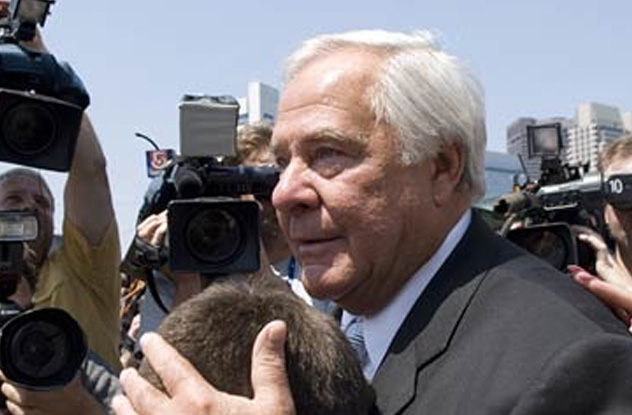
In 1965, a group of men took low-level crook Edward Deegan into an alley in Chelsea, Massachusetts and shot him to death. Four men were arrested: gang-leaders Peter Limone and Henry Tameleo and small-timers Joseph Salvati and Louis Greco. They were convicted based on the testimony of hit man Joseph “The Animal” Barboza, an associate of the Patriarca crime family. The FBI backed up his story. All four men were convicted and got lengthy sentences.
Tameleo and Greco died in prison, Tameleo in 1985 and Greco in 1995. Salvati had his sentence for accessory to murder commuted and was released in 1997, while Peter Limone was released in 2001 after spending 33 years in prison.
Limone was released because in 2000, while investigating the FBI and their relationship to gangsters in the Boston area, authorities found memos showing that FBI informant Joseph Barboza had framed the four men. The FBI knew two days before Deegan was murdered that there was a hit on him. Barboza had framed the men to protect another FBI informant, Vincent “Jimmy” Flemmi. J. Edgar Hoover even knew about the case and supported the plan to not prosecute Flemmi because he was an important informant.
Salvati and Limone were exonerated in 2001. Along with the estates of Tameleo and Greco, they sued and they won a settlement of over $101 million combined. When asked what he thought about four innocent men spending decades in prison, one of the agents, H. Paul Rico said, “What do you want? Tears?” Rico was arrested in 2003 for the 1981 murder of a Tulsa businessman, and he died in custody in 2004.
Robert Grimminck is a Canadian crime-fiction writer. You can follow him on Facebook, on Twitter, or visit his website.







